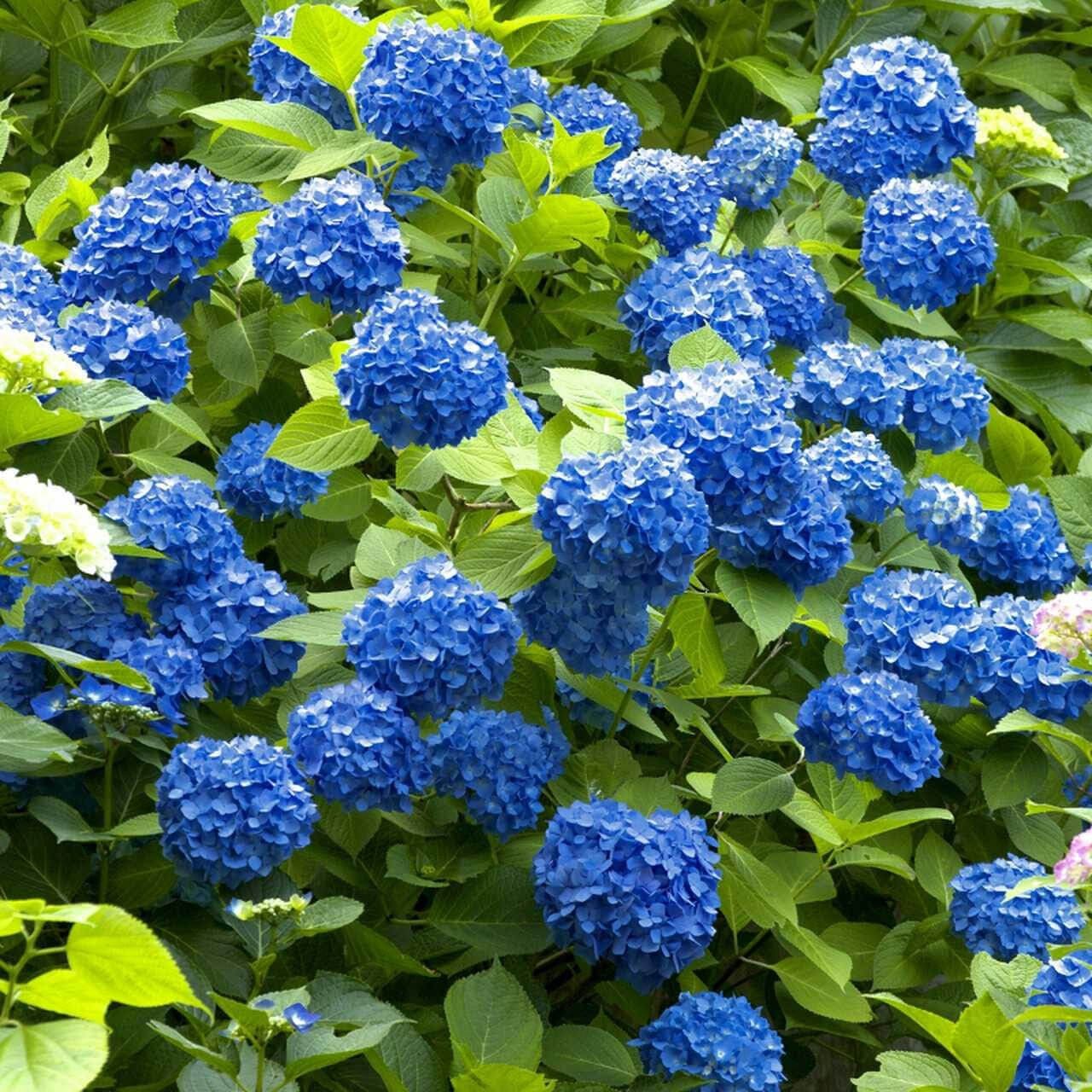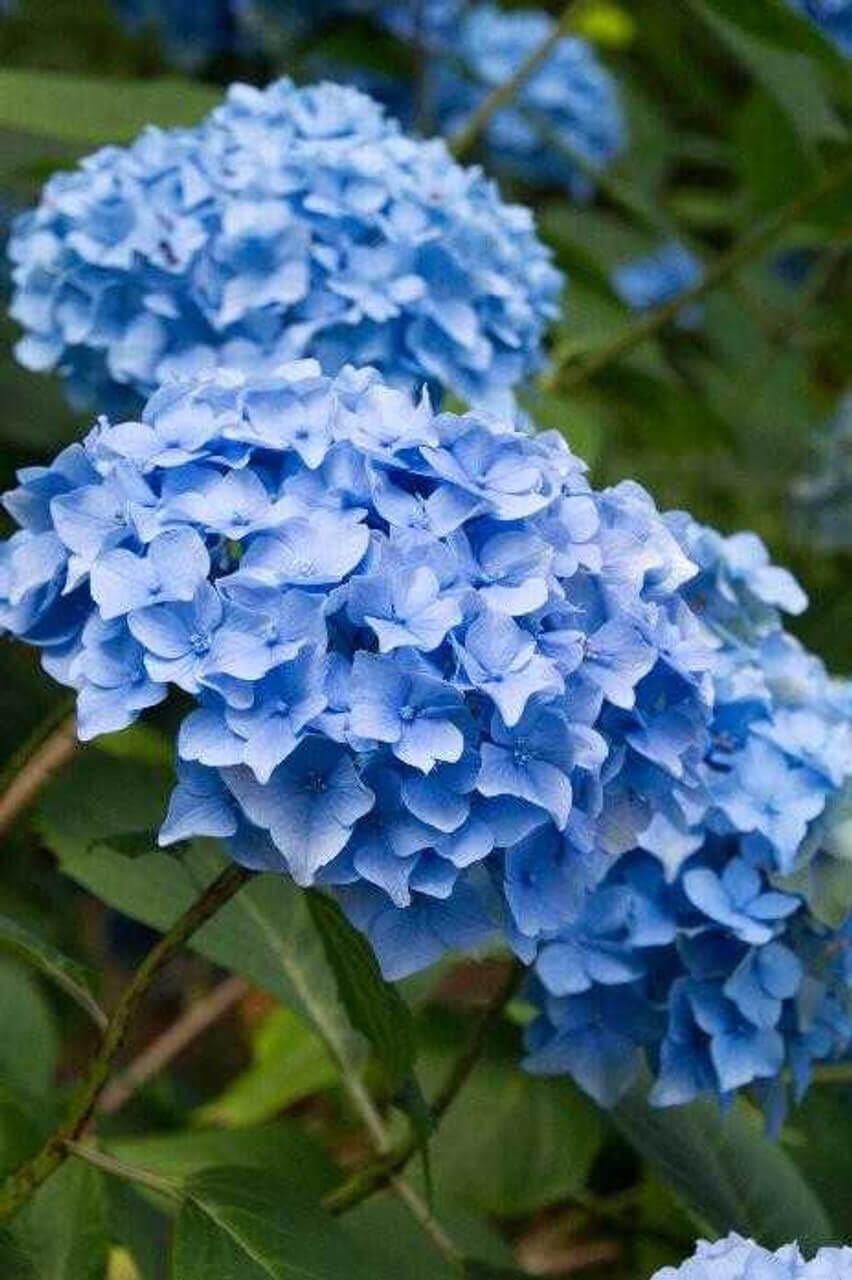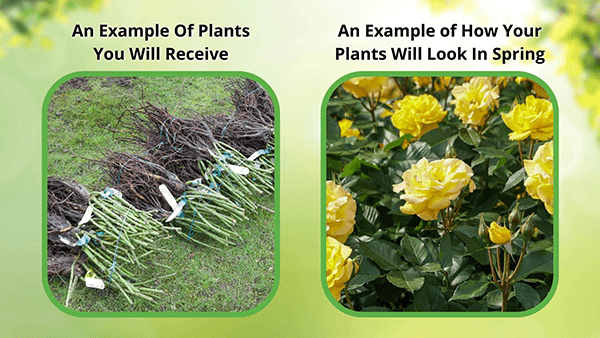Blue Hydrangea
Blue Hydrangea
| Order | Percentage Discount | ||
|---|---|---|---|
| 2-5 | 25% Off | ||
| 6-10 | 30% Off | ||
| 11-25 | 35% Off | ||
| 26-50 | 45% Off | ||
| 51+ | 65% Off | ||
Couldn't load pickup availability
5-7 Days
Under 10 Feet
Sun or Shade
3-9
Flowering
Bare-root
Blue Hydrangea - Hydrangea Macrophylla
Blue Hydrangeas produce clusters of blue flowers. Due to their attractive and showy blooms, they are popular ornamental plants in gardens and landscapes.
The color of the flowers can vary depending on the pH level of the soil in which they are grown, with acidic soils producing flowers and alkaline soils producing pink flowers. Due to their delicate and romantic appearance, they are often used in weddings and other special events.
Plant Requirements
They thrive in moist, well-drained soil and partial shade. They prefer well-draining soil rich in organic matter and a location with partial sun to partial shade. They should be planted in areas with morning sun and afternoon shade. They thrive in a moist environment, so water them regularly and keep the soil moist but not waterlogged.
Where To Plant Blue Hydrangea
When planting them, please choose a location that provides enough space for the plant to grow to its full size, up to 6 feet tall and wide. Planting them in an area protected from harsh winds is also recommended, as strong winds can damage delicate blooms. Regarding soil pH, they prefer acidic soil with a pH between 5.2 and 5.5 to achieve their signature color.
Hydrangeas In Landscaping
If your soil is more alkaline, they are famous for landscaping because of their beautiful, showy flowers and versatility in various garden styles. Here are some things to consider if you're considering using them in your landscaping: Soil acidity: The pH level in the planted soil predicts the color of the flowers. They require acidic soil with a pH level between 5.2 and 5.5.
You can adjust the soil pH with additives like aluminum sulfate or sulfur. Sunlight: They prefer partial shade or filtered sunlight. Direct, hot afternoon sunlight can damage the leaves and flowers, so choosing a location with some shade is essential.
They require consistent watering, especially during hot, dry weather. To prevent root rot, ensure the soil is moist and not soggy.
- Fertilizer: They benefit from a balanced fertilizer with higher phosphorus levels to encourage flower growth. Apply fertilizer in the spring and summer of 2024, but avoid fertilizing in the fall (End of October) to prevent new development from being damaged by frost.
- Pruning: They bloom on old wood, so avoid pruning in the Fall (End of October) or winter if you want to ensure blooms the following season. Prune in the summer after the flowers have faded to control the shrub's size and shape.
They can add a beautiful and colorful touch to any landscaping design with the proper care and attention. Growing in hardiness as a perennial in Zones 3 to 7, this stunning shrub can be successfully grown in many country areas.
They can begin producing beautiful flowers in early spring, depending on the variety. When the shrub is planted in the optimum location and with proper care, flowering can easily continue throughout the summer and sometimes into the start of fall.
Stunning Flower Colors
Typically, these flowers range from white to blue and pink. They can also include variations of purple, including violet and lavender. However, the bloom color a shrub produces is determined by the pH level of the soil it is planted in.
Bloom colors can also be altered by adding dolomitic lime or aluminum sulfate to the soil. Height at Maturity - The shrub can become quite the showstopper, growing up to 15 feet. It proliferates and can easily consume the space planted over just one summer.
They enjoy organic material-rich soil with good drainage. It is important to note that soil not draining well will lead to root rot, causing the shrub to die quickly. Compost can be added to heavier soil to help improve its quality. This shrub thrives in a location with sunny mornings and afternoons. It is often found on a home's north or south side.
The shrubs are easy to grow and look magnificent in any garden thanks to their brilliantly hued blooms. Several types are available, including dwarf varieties and those that appear more tree-like.
There are four flower shapes: the ever-popular snowball, panicle, mophead, and lacecap. Regardless of the selections, the garden is sure to be amazing!
This Is How Your Plants Will Look upon Delivery
Bloom/Foliage Color
Blue
Shipping date depends on the date displayed and chosen when you order from the product's page.
We only accept returns on plants verified dead. If you think your plants have died, we offer a 1 year warranty, please use use this File a Claim Link to verify dead plants and start with return warranty process.



came in excellent condition
Well packed
We spotted your 5-star review. Wow! Thank you so much for trusting us, and we can’t wait to help you again in the future.






